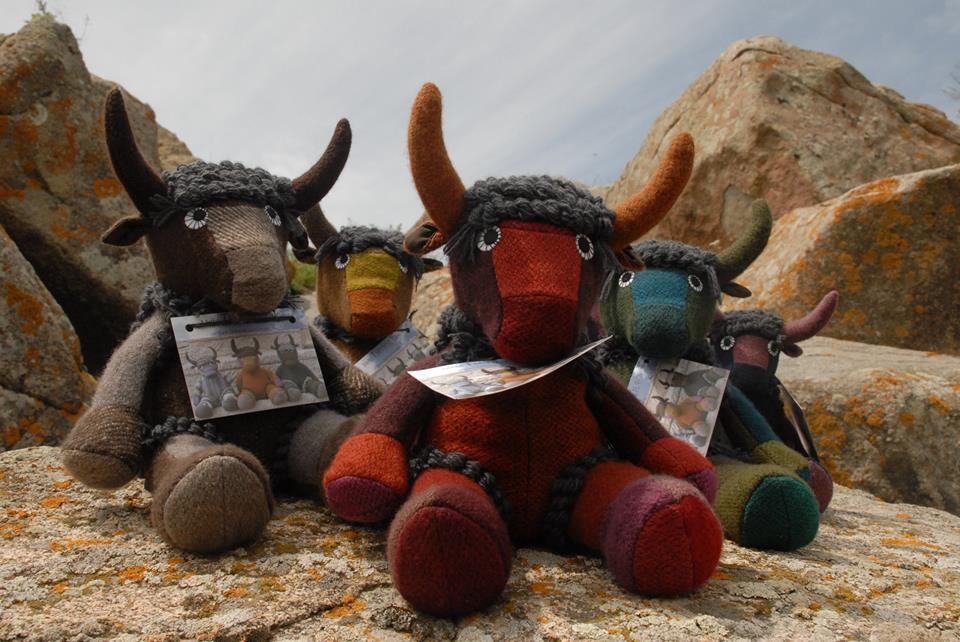Toys
|
We began making toys at Norlha around 2011, beginning with the emblematic yak, of course. It more or less retained the same shape but went through a variety of transformation in hue and texture, which mainly depended on the kind of leftover fabrics we had on hand, the most colorful being the Sonia Rykiel stripes. Next came a teddy bear, a plump and skinny version, all of which were displayed on the workshop office shelves. Some bears looked so odd that staff children found them endearing. Then came the yeti family and the local animals; horses, sheep and pigs. We even tried our hand on a fox. We always tried our toy models on the gang of children who charged into the office after four and on Saturdays, then we would have them play with the finished models in a photo shoot, which would turn into a big party, with breaks and snacks. Tibetan children never really had toys, so all this was novelty to them. When we came to Ritoma in the mid 2000’s they played among the rocks, ran in the pasture, gathered flowers, made garlands. They played with the baby animals and build little kitchens with real fires, which they learned to light early on, or played with stones. In winter, they slid on the ice. There were a few little plastic cars around, and a few overworked bicycles. China was the world’s factory and exported toy animals worldwide, but the nomads, though self-sufficient, were short of cash and reserved it for essentials or donated it to the monasteries. Now this has all changed; younger parents like to buy their children what they never had; they have cash, from Norlha salaries or sold animals, and the stores in nearby Tso are bursting with plastic and acrylic goods that beckon to the children on every trip to town. Teddy bears, plastic kitchen sets, bright kites and toy motorbikes have found their way to Ritoma. We continue to develop new toys and the children have become increasingly sharp at exercising their experience of the toy market, and test the novelties, offering comments and suggestions. |





























